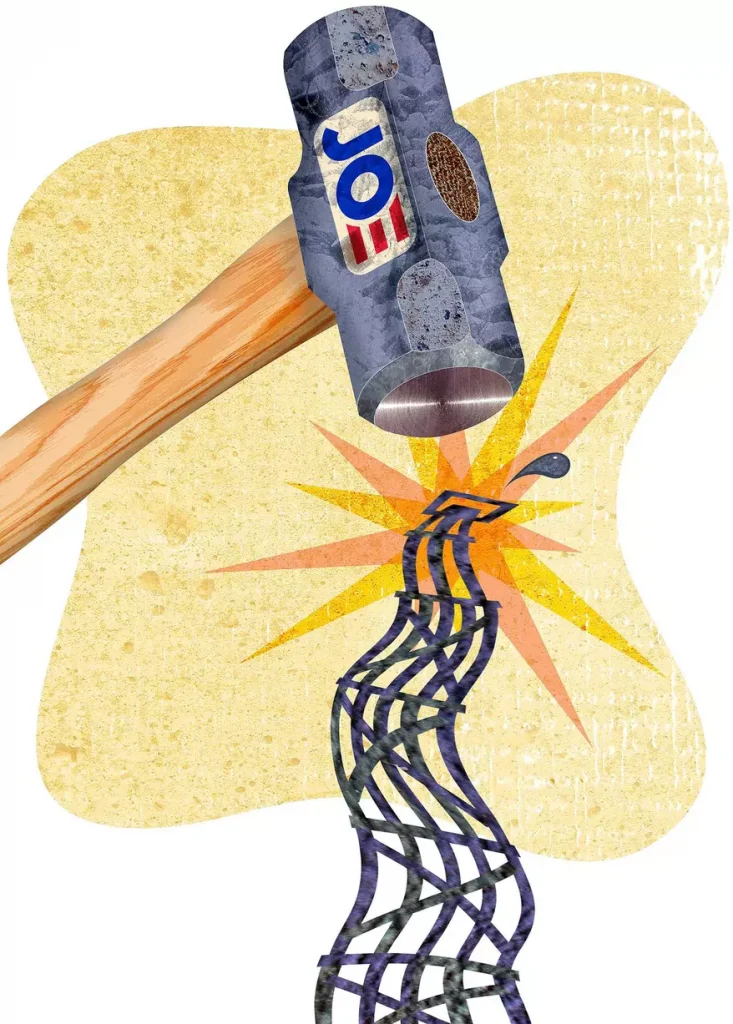How tall are you? How much do you weigh? What is the net value of your assets? The answers to all of these questions change over time — they are variables. Your height changes over the years — as you grow from an infant and then into middle age, you begin to shrink — but the measuring stick (centimeters or inches) remains constant. Your weight goes up and down, but the measuring unit — pounds or kilograms — remains constant.
Most measuring units are viewed as constants (except in quantum physics, where everything is a variable).
The question about the value of one’s assets is different because both the quantity of assets tends to change over time, and the measuring stick (i.e. the value of the U.S. dollar, euro, yen, etc.) varies at an uncertain rate over time, which is called inflation or deflation.
Over the long run, most prices tend to fall in real, inflation-adjusted terms, even though they may increase in nominal terms, because of technological and productivity advances. Prices of high-tech items often fall at rapid rates for decades; for instance, the real price of many computer chips is cut in half every two years or so, while their performance is doubled over the same time at a compound rate — and it has been so for well over half a century.
Most foods cost a fraction of what they did a century ago when measured in terms of the hours people work to make the money to buy them. Many consumers were shocked this past year by the big price increases in eggs and chickens because they had become accustomed to very low prices of these and other food items. Yet in real terms (hours worked to purchase these items), prices are still lower than they were 50 years ago. The prices of new automobiles have roughly mirrored the government’s measure of inflation for the last 70 years, but the new car of today has little resemblance to the car of yesteryear, given the incredible advances in safety and convenience features.
Americans have become used to the fact that, despite occasional bouts of inflation, wages for most rose faster than inflation and taxes, so they were still better off. But for the last two years, inflation has risen faster than the average wage, which is the source of much discontent. Over the last 25 years, the dollar has lost almost half its value (purchasing power).
While high-tech items and appliances have become relatively cheaper, some items — in both real and nominal terms — have become more expensive. The price of gold is up ninefold, and the prices of copper, silver and crude oil are up almost sixfold in the last quarter century. Other commodities, such as aluminum, have about kept up with the general inflation.
There are both cash and futures markets in gold and crude oil, but these prices are not necessarily determined by real supply and demand because the government has its “thumb” on the scale. The world’s governments are estimated to hold about 20% of the world’s known gold reserves. Even modest sales or purchases of gold by governments, or changes in regulations on owning gold as was done in the 1930s, can greatly affect the price of gold.
In order to placate its so-called green supporters, the Biden administration has waged war on fossil fuels by restricting the sale of oil leases, slow-walking oil and transport permits, and even killing pipeline construction projects. All of this has led to much higher prices for oil and its derivative products such as gasoline. The winner of the next presidential election will have more to do with oil prices than supply-and-demand fundamentals.
Those trying to preserve wealth for retirement or other reasons find that the people in government have made it most difficult. Excessive government spending leads to ever-growing deficits, which causes the Federal Reserve and other central banks to print more money in sporadic fits. Money expansion without a corresponding increase in goods and services, often because of government taxes or regulations, will reduce the buying power of the dollar, making it difficult to protect one’s wealth by purchasing dollar-denominated financial instruments.
Governments that untie their currency from something real invariably debase it and then try to cover that sin through wage and price controls. This has been true since the Roman emperor Diocletian failed in his attempt in A.D. 300 — a failure replicated by every other government that has tried them over the last 2,000 years.
Purchasing real estate and other real assets, including such things as antique vehicles, rare guns, jewelry and art, can provide some protection against the loss in value of government currencies, but such assets tend to be illiquid. Metals and some industrial commodities that are frequently traded on organized cash and futures markets can provide a store of value and a unit of account with a high degree of liquidity but often involve significant transaction costs, particularly for small quantities.
More cost-effective ways for buying and selling real assets using objective measuring sticks (a given quantity or weight of widely used commodities) as a unit of account are being developed. Artificial intelligence and the internet will enable anyone to know the value of their assets in terms of any commodity and the ability to trade them in real time at any time and place.
• Richard W. Rahn is chairman of the Institute for Global Economic Growth and MCon LLC.
https://www.washingtontimes.com/news/2023/may/29/2024-election-will-have-more-to-do-with-oil-prices/
© Copyright 2023 The Washington Times, LLC.
